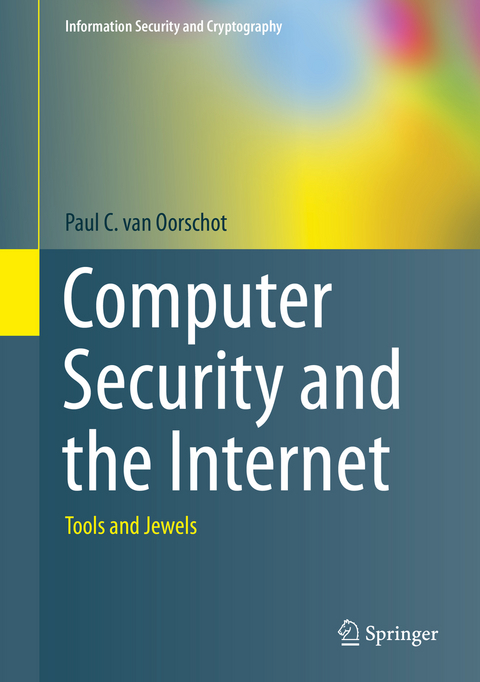
Computer Security and the Internet
Springer International Publishing (Verlag)
9783030336486 (ISBN)
- Titel erscheint in neuer Auflage
- Artikel merken
The book is "elementary" in that it assumes no background in security, but unlike "soft" high-level texts it does not avoid low-level details, instead it selectively dives into fine points for exemplary topics to concretely illustrate concepts and principles. The book is rigorous in the sense of being technically sound, but avoids both mathematical proofs and lengthy source-code examples that typically make books inaccessible to general audiences. Knowledge of elementary operating system and networking concepts is helpful, but review sections summarize the essential background. For graduate students, inline exercises and supplemental references provided in per-chapter endnotes provide a bridge to further topics and a springboard to the research literature; for those in industry and government, pointers are provided to helpful surveys and relevant standards, e.g., documents from the Internet Engineering Task Force (IETF), and the U.S. National Institute of Standards and Technology.
Paul C. van Oorschot is a Professor of Computer Science at Carleton University (Ottawa), where he is Canada Research Chair in Authentication and Computer Security. He is an ACM Fellow, an IEEE Fellow, and a Fellow of the Royal Society of Canada. He was Program Chair of NSPW 2014-2015, USENIX Security 2008, NDSS 2001-2002, and co-author of the Handbook of Applied Cryptography (1996). He has served on the editorial boards of IEEE TDSC, IEEE TIFS, and ACM TISSEC/TOPS. His research interests include authentication and identity management, computer security, Internet security, security and usability, software security, and applied cryptography. His academic career was preceded by 14 years of industrial research and development in telecommunications and software security.
Basic Concepts and Principles.- Cryptographic Building Blocks.- User Authentication: Passwords, Biometrics and Alternatives.- Authentication Protocols and Key Establishment.- Operating System Security and Access Control.- Software Security: Exploits and Privilege Escalation.- Malicious Software.- Public-Key Certificate Management and Use Cases.- Web and Browser Security.- Firewalls and Tunnels.- Intrusion Detection and Network-Based Attacks.- Epilogue.- Index.
lt;p>"This excellent book covers several useful and very practical topics in computer security, from cryptographic protocols to software vulnerabilities and malware. It is full of very thoughtful examples, lots of handy illustrations, and even small exercises for teaching purposes. ... the book is a good compromise between understanding the essentials of computer security and giving concise yet useful examples and explanations. I really enjoyed reading it." (Santiago Escobar, Computing Reviews, January 4, 2021)
| Erscheinungsdatum | 07.04.2020 |
|---|---|
| Reihe/Serie | Information Security and Cryptography |
| Zusatzinfo | XXII, 365 p. |
| Verlagsort | Cham |
| Sprache | englisch |
| Maße | 178 x 254 mm |
| Gewicht | 932 g |
| Themenwelt | Informatik ► Netzwerke ► Sicherheit / Firewall |
| Technik ► Bauwesen | |
| Schlagworte | Access Control • authentication protocols • biometrics • Computer Security • cryptography • Firewalls • Information Security • Intrusion Detection • key establishment • Network Security • Operating system security • Passwords • Software Security • User Authentication • web security |
| ISBN-13 | 9783030336486 / 9783030336486 |
| Zustand | Neuware |
| Informationen gemäß Produktsicherheitsverordnung (GPSR) | |
| Haben Sie eine Frage zum Produkt? |
aus dem Bereich



